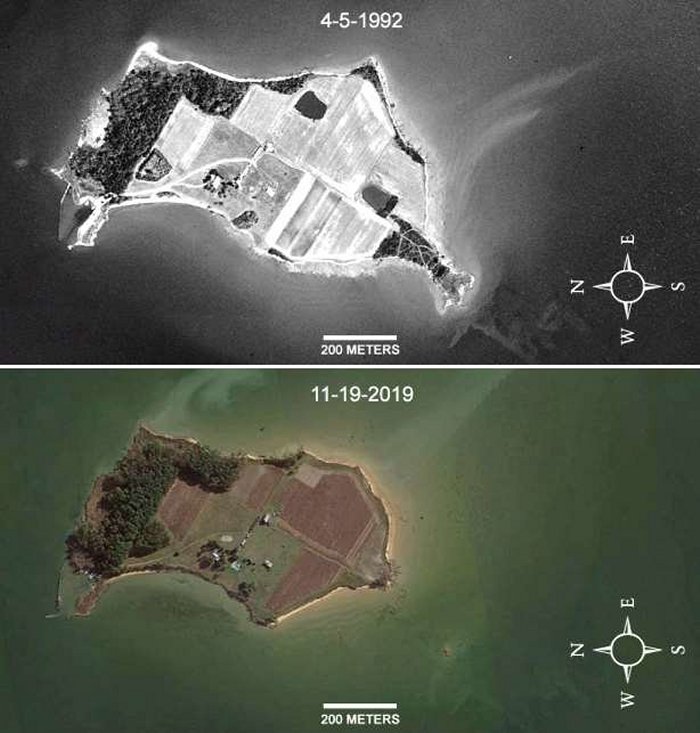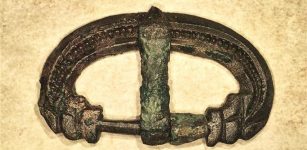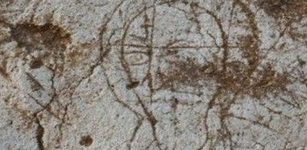Ancient Tools Found In Maryland Re-Write The History Of First Humans In America
Jan Bartek – MessageToEagle.com – The timing of the first human arrival in the Americas has been a subject of intense scientific debate for years. However, a scientist affiliated with the Smithsonian Institution believes he has uncovered evidence in Maryland that could resolve this longstanding question once and for all.
The eroding shoreline of Parsons Island is unveiling a remarkable glimpse into thousands of years of human history that had been concealed beneath the surface. Credit: Darrin Lowery
It is important to note that the scientist’s conclusions have faced criticism, and not everyone agrees with his theory. The debate surrounding the timing of the first human arrival in the Americas continues, but this new evidence from Maryland could potentially shed light on this intriguing archaeological mystery.
When Did The First Humans Reach America?
Traditionally, archaeologists have argued that people walked through an ice-free corridor that briefly opened between ice sheets approximately 13,000 years ago. However, many archaeological and genetic findings, including human footprints in New Mexico dated to around 23,000 years old, suggest that people may have arrived on the continent much earlier. These early Americans likely traveled along the Pacific coastline from Beringia, the land bridge between Asia and North America that emerged during the last glacial maximum when ice sheets bound up large amounts of water, causing sea levels to fall.
There are also other theories. As previously reported by Ancient Pages, Summer Praetorius of the US Geological Survey and her colleagues “used climate models and found that ocean currents were more than twice the strength they are today during the height of the last glacial maximum around 20,000 years ago due to glacial winds and lower sea levels.”
Credit: Adobe Stock – anibal
During a press conference, the team explained that Arctic inhabitants today navigate the sea ice using dog sleds and snowmobiles. However, early Americans may have utilized the ‘sea ice highway’ to transport and hunt marine mammals, gradually making their way into North America, according to Praetorius. The climate data indicates that conditions along the coastal route were potentially favorable for migration between 24,500 and 22,000 years ago, as well as 16,400-14,800 years ago, possibly facilitated by winter sea ice.
Ancient Tools In Maryland Push Back The Human Migration Timeline
Darrin Lowery, a coastal geologist, has conducted extensive research on Parsons Island in the Chesapeake Bay, where he and his team have uncovered a remarkable collection of 286 artifacts dating back to the earliest days of human settlement in North America. Notably, the oldest of these artifacts was found in charcoal that dates back an astonishing 22,000 years.
In-situ bifate found in the sediment layer. Credit: Darrin Lowery
If Lowery’s findings are accurate, they could potentially rewrite our understanding of American prehistory, raising intriguing questions about how these ancient people arrived on the continent, the number of early migration waves, and whether they are the ancestors of Native Americans.
Over the years, Lowery’s archaeological work has uncovered a number of intriguing artifacts that may challenge the established historical migration timeline. One notable artifact discovered by Lowery and his team is a leaf-shaped prehistoric stone tool. By dating the surrounding sediment, they determined that this artifact dates back more than 20,000 years, potentially pushing back the accepted timeline for human migration and habitation in the region.
Lowery’s research is corroborated by similar discoveries in New Mexico’s White Sands National Park, which suggest human settlement between 21,000 and 23,000 years ago. These groundbreaking findings challenge our current understanding of American prehistory and, if proven valid, could significantly rewrite this historical narrative. The implications of these discoveries are far-reaching and could shed new light on the origins and migration patterns of the earliest inhabitants of the Americas.
New claims of archaeological sites dating back to an earlier period often face significant skepticism. This skepticism stems from two primary sources: legitimate scientific scrutiny and the potential threat these claims pose to long-established views within the field.
The situation is further complicated by the fact that the researcher, Darrin Lowery, who has been affiliated with the Smithsonian but conducts much of his work independently, presented the results of his study on Parsons Island in a 260-page manuscript posted online rather than through the traditional peer-reviewed journal publication process.
In 4-5-1992, Parsons Island encompassed 99 acres (top). In 11-19-2019, Parsons Island encompassed about 71 acres; a loss of ~28 acres over a 27-year period. The island, as of 2021 currently encompasses ~69 acres. Based on these data, the island loses ~1 acre of land per year to coastal erosion. Credit: Darrin Lowery
While the peer-review process is designed to validate scientific claims, Lowery argues that in archaeology, it can lead to a defensive mentality, where scientists may dismiss evidence that contradicts the prevailing paradigm.
Clovis and pre-Clovis artifacts. Credit: Darrin Lowery
The peer-review process is designed to ensure the validity and quality of scientific research. However, Lowery believes that this process may lead to the dismissal of evidence that contradicts the prevailing scientific paradigm. This perspective suggests that the peer-review system could potentially hinder the acceptance of new or unconventional ideas, even if they are supported by empirical data.
He also said that “life’s too short” to go about formally publishing the study, saying this particular component of academic science is “the dumbest game I’ve ever played.”
See also: More Archaeology News
Parsons Island is a significant archaeological site that has recently been added to the list of pre-Clovis sites. These sites are characterized by evidence of human habitation predating the widely accepted Clovis culture, which was previously believed to be the earliest in the Americas. Lowery is resolute in continuing to excavate the area to uncover conclusive evidence that will persuade skeptics and solidify the site’s status as a pre-Clovis settlement. The ongoing excavations at Parsons Island can potentially reshape our understanding of the timeline and patterns of human migration to the Americas.
Written by Jan Bartek – MessageToEagle.com – AncientPages.com Staff Writer















